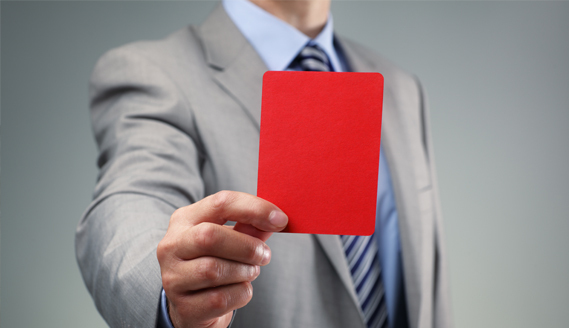
I regularly speak with prospective clients and business owners who are frantically trying to recover a website that was once a profitable business and, after a steep drop in organic search engine traffic, are now barely scraping by. This is often a frightening wake-up call to unsuspecting webmasters, and one that is difficult to predict or properly diagnose.
There are several possible explanations for a sudden drop in rankings, but more often than not, it is due to a Google penalty or due to poor SEO practices.
Google updates their algorithm regularly (hundreds of times per year, in fact), and occasionally, they release a major algorithm update like Penguin or Panda that causes a major shake-up in the webmaster community. Unfortunately, while they ultimately increase the quality of search results for millions of users, they can also crush a previously-thriving website if their website sets off any of their red flags.
Here are some of the reasons websites will experience a sudden drop in traffic, as well as ways you can identify them.
1. Website penalty
If Google feels that your website is being deceptive, attempting to artificially alter or influence search engine results, or is thin or low quality, they can penalize your website which will significantly hurt your performance in search engines.
There are many types of search engine penalties; the two most common being Google Penguin and Google Panda, which penalize unnatural links and low quality or thin content (respectively). Others include the EMD penalty (exact match / over-optimized domains), manual actions, Hummingbird, and dozens more).
If your website has very little text/content, if your pages are low value or spammy, or if you have backlinks that are linking with over-optimized keywords or are paid/unnatural, you may have been penalized and need to take the appropriate steps to audit and improve your content and link profile.
2. Indexing issues
I've seen sites that accidentally had "User-agent: * Disallow: /" in their robots.txt file. For those of you less savvy, that single line disallows crawling of your entire website from any search engines. Talk about an easy way to see a sudden drop in traffic.
There are many different indexing issues your site may have, but your robots.txt file is a great place to start. In addition, ensure you have a clear cut navigation area, a proper sitemap.xml file set up, and a positive Google Webmaster Tools report that shows 0 broken internal links.
3. Bad linking practices
Every single link you create counts as a "vote" towards that website. If you start linking to websites with a very bad reputation (or websites that are penalized or known to produce spam), you could be associated with that site for linking to a bad neighbor. A single link to a website like this on a smaller less authoritative website could results in a sudden drop in traffic.
Selling links is another a surefire way to land a penalty with the big G, as is hiding links on your website. By avoiding common spam practices, you will be only linking to quality websites and improving your reputation with search engines.
4. Backlinks being removed
With smaller website backlink profiles, having a powerful backlink (that was once linking to your website) suddenly disappear could significantly harm your rankings. This can happen for a number of reasons.
When a website goes offline, your backlink ceases to exist, which means after a while, Google will update its index of that webpage, negating any benefits your website once had any links on their site.
If a webmaster decides your link doesn't belong, or if you were renting or buying a backlink (shame on you), the owners may have decided to remove it due to lack of payment.
Use a site like Ahrefs.com to identify which of your backlinks have recently been removed to diagnose this issue, and try to strengthen your link profile to avoid having the plug pulled on your rankings when a link disappears in the future.
5. Negative SEO
While it's unlikely that you're being attacked, negative SEO is a very real and growing threat to webmasters. It's now possible to build harmful links to a website in an attempt to deceive Google into thinking you are the webmaster of that website building junk backlinks to game search engines; this can result in a penalty on the unsuspecting webmaster for unnatural link building.
Negative SEO can be diagnosed using one of the aforementioned SEO tools, and sometimes within Google Webmaster Tools. However, Google will not notify you if you've been hit by Penguin after a negative SEO penalty; this is something you or a professional will have to diagnose yourselves.
6. Sudden change in content habits
If you posted to your website's blog once every single day for 6 months and then suddenly stopped blogging for a month, you may see a sudden drop in traffic. Google has admitted to favoring sites with fresh content, so when a site stops regularly updating their website, you may see a negative change in your rankings.
7. Natural causes
Google scans the web constantly, and it's entirely possible that Google suddenly believes other webpages are now more relevant to users than yours, pushing their search above your website in the search results. While this type of drop could exhibit all of the same symptoms of a Google penalty, as unfair as this may seem, this is the nature of the web and of Google's algorithm.
Your best course of action to improve your website traffic after a drop is to audit your content and your links, and to increase the amount of great content you are creating.
